Introduction to child psychology
Use 'Print preview' to check the number of pages and printer settings.
Print functionality varies between browsers.
Printable page generated Friday, 26 April 2024, 8:10 PM
Introduction to child psychology
Introduction
Within this free course, you will be introduced briefly to the discipline of child psychology and to theories and approaches that have been developed to help us understand and support children’s lives. Psychologists are interested in understanding changes in children and their abilities over time – their physical growth, thinking, learning, emotions, relationships and more. Psychologists work to describe how development is shaped through internal and external influences, such as the role of children’s immediate environments and the role of culture in influencing and shaping development. You will also learn about the role of child psychologists in applied settings and how they can work with other professionals to support the lives of children and young people.
This OpenLearn course is an adapted extract from the Open University course E102 Introduction to childhood studies and child psychology.
Tell us what you think! We’d love to hear from you to help us improve our free learning offering through OpenLearn by filling out this short survey.
Learning outcomes
After studying this course, you should be able to:
understand the discipline of child psychology as an area of study
understand how theories try to explain children’s development
discuss important questions that are central to child psychology
understand how child psychologists work in different applied settings.
1 What is child psychology?
How are children’s lives changing and what role do child psychologists have in supporting children? Child psychology is a broad area, covering how people change as they grow up from birth through to adolescence and trying to explain how these important changes occur – are 3-year-olds, 7-year-olds and teenagers different just because of their experiences of the world, or what role is played by biological changes within the individual?
Because child psychology is so vast and tries to answer so many questions, researchers and practitioners often separate development into specific areas. Broadly, these tend to map onto children’s physical, cognitive (thinking, learning, memory, etc.) and social/emotional development. Child psychologists attempt to make sense of every aspect of child development, including how children learn, think, interact and respond emotionally to those around them, make friends, understand emotions and their own developing personalities, temperaments and skills.
Children typically reach developmental ‘milestones’. These milestones reflect abilities, such as walking and talking, that are achieved by most children at similar ages. Among other things, we are interested in trying to explain how children reach these milestones and how individual, social and cultural factors may influence how we develop.
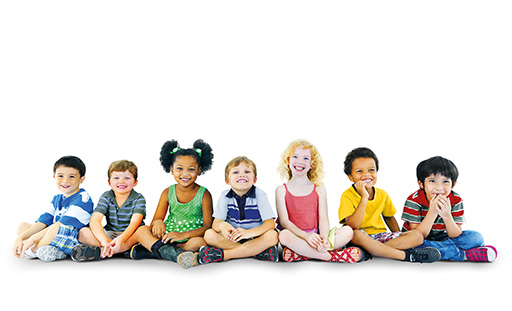
A photo of 7 children from different ethnic backgrounds.
Psychologists also specialise in different areas of interest: while some focus on supporting children in school settings (educational psychologists) others focus on supporting children with atypical development (clinical psychologists).
Activity 1 What do child psychologists do?
In this audio sequence Nathalia Gjersoe, a lecturer in developmental psychology at The Open University, looks at the roles and work of three developmental psychologists, all of whom are concerned with children. Duncan Gillard (an educational psychologist), Silvana Mengoni (a researcher) and Catriona Havard (a forensic psychologist) all give their views about child psychology. Listen to the audio and think about the questions that follow.
Transcript: Views on child psychology
- How important are developmental milestones in understanding development?
- How can psychologists support children’s lives?
2 Using theories to understand development
Like all fields of scientific research, child psychology is characterised by different perspectives and theories, which have shaped how our understanding of development has changed over time. There are many different theories to describe children’s development, but here we focus on just two. Some theories argue that development occurs primarily through factors internal to the child that are biologically generated. In contrast, other theories consider environmental factors, such as the child’s social environment, to be more important in stimulating and supporting development.
We will look at the theories of two influential child psychologists who sought to understand how children learn, and who represent these different perspectives :
- development is primarily internal: Jean Piaget
- development is determined by environmental factors: Lev Vygotsky.
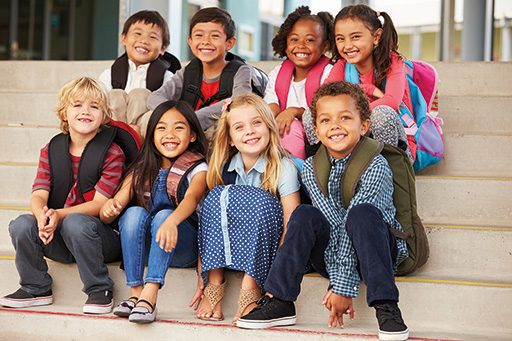
This is a picture of eight children aged around 6 to 8 years from a variety of ethnic backgrounds, all smiling whilst sitting on some stairs in two rows of four.
2.1 Development is primarily internal: Piaget
Shortly after the First World War a Swiss biologist and teacher named Jean Piaget (1896–1980) became interested in a new method for testing children’s intelligence. Intelligence Quotient (IQ) tests were originally developed by psychologists to identify children in France who were considered to be at risk of learning delays. The test involved presenting children with a series of questions and comparing each child’s individual performance with group averages for the child’s age. Piaget noticed that children of the same age often made the same sorts of errors in consistent ways. This led him to think that children might think about the world in a substantially different way from adults that could not be explained simply through having less experience of the world. Piaget was a prolific researcher and eventually directed one of the world’s first research institutes specialising in examining child development. On the basis of his lifelong work he developed a theory that the thinking of typically developing children matures in distinct stages, meaning that older children are biologically capable of understanding things that those in earlier stages cannot. He believed that children moved through these stages as a result of the accumulated physical experience of interacting with objects in the world – so that their growing abilities are the result of brain maturation as well as encountering experience in their environments.
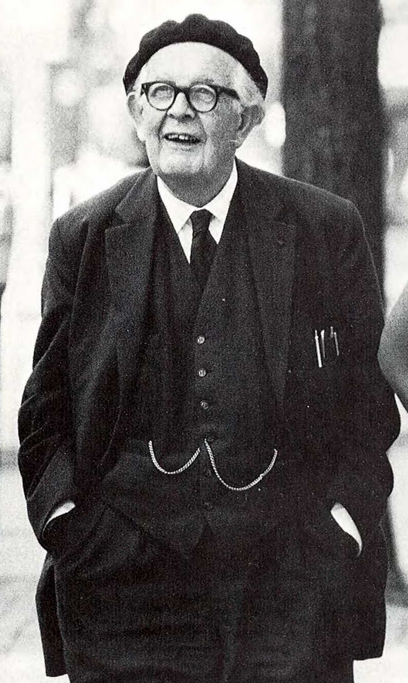
Piaget was especially interested in how children became able to form mental representations of the world and felt that cognitive development proceeds through a series of predefined biological steps that are stimulated through physical interaction with the world. This theory, because it partially focuses on biological maturation, predicts that all children across the world should go through these stages in the same order and around the same time, regardless of differences in the environment that they are growing up in.
2.2 Development is determined by environmental factors: Vygotsky
Piaget set the tone for many decades of research but his theory has also received a great deal of criticism. Many believe that Piaget ignored the huge influence that society and culture have in shaping a child’s development. At a similar time, another researcher named Lev Vygotsky (1896–1934) had come to similar conclusions as Piaget about children’s development, in thinking that children learned about the world through interaction with it. However, where Piaget felt that children moved naturally through different stages of development, based on biological predispositions and their own individual interactions with the world, Vygotsky claimed that adult or peer intervention was a much more important contributor to the developmental process. Vygotsky concentrated more on children’s immediate social and cultural environment and their interactions with adults and peers. He argued that cognitive development occurred first through children’s immediate social interactions, and then moved to the individual level as they began to internalise their learning. While Piaget saw the child as actively discovering the world through individual interactions with it, Vygotsky saw the child as more of an apprentice, learning through a social environment of others who had more experience and were sensitive to the child’s needs and abilities.
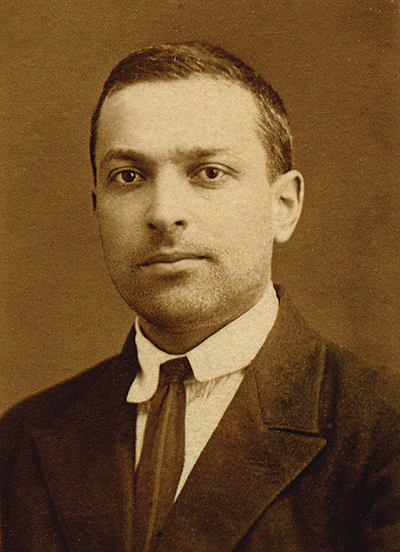
3 Asking questions about children’s development
All theories about development are guided by key questions. There are a number of questions that have persisted since the beginning of child psychological research. Child psychologists are interested in understanding how development occurs and what influences this development. For example, how do young children learn about emotions? Do they simply learn to show emotions from other people in their environment? Here we offer two important questions involved in trying to understand the lives of children and young people:
- How does socio-cultural context influence development?
- How do children shape their own development?
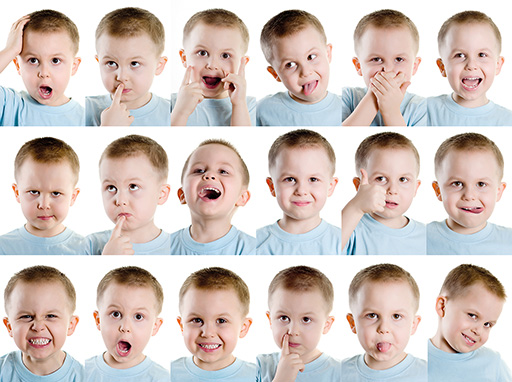
A series of images of the same boy making different facial expressions that show happiness, amusement, puzzlement, surprise, etc.
3.1 How does socio-cultural context influence development?
Children grow up in specific physical, social, cultural, economic and historical circumstances (their socio-cultural context), all of which will influence their childhood. Research has shown that children’s socio-cultural context can have a large influence on their development. We know that culture influences how children develop; across different cultures, children can develop in quite different ways (Montgomery, 2008). And we know that children who are deprived of care from a primary caregiver can often experience difficulties in later childhood because their early attachment experiences were affected by this (Bowlby, 1980). Development of course involves a process of learning and improvement, and children can only learn when others are there to support them, like parents, teachers and siblings. This does not conflict with Piaget’s stage theory but does extend it to explain how some of the environmental experiences that children receive can allow them to move from one stage to another, in line with Vygotsky’s socio-cultural approach.
3.2 How do children shape their own development?
A lot of research focuses on the external influences that shape children’s development and treats them as relatively powerless. But of course children have a role in their own development and in selecting the sorts of environmental influences they are exposed to. Even newborns select what to pay attention to by where they look and how they orient themselves (usually towards familiar sounds, things that are new or surprising to them, or to the smell of milk!). Infants will often try to elicit certain behaviours from adults by giving them cues, such as covering their eyes to play peek-a-boo. Indeed, infants’ sensitivity to very subtle communicative cues and their role in social interaction is surprisingly sophisticated. Aspects specific to the child such as their temperament can also greatly influence how adults and other children interact with them. Once children begin to speak they often drive conversations – expecting responses from adults or asking questions. And when children begin to engage in imaginary play from around 2 years of age they often take on new personas and roles that help them make sense of different aspects of their world or deal with things that they are frightened of (Howes and Matheson, 1992), for instance by pretending to be a superhero fighting off monsters. By the time children reach school age they have begun to make many decisions about their environment, such as who to be friends with and what interests to pursue.
4 Child psychologists in applied settings
Child psychology is not just about developing theories to explain development, it also has a practical reason. It is about working with children and young people to support their lives. Child psychologists often work in practical settings such as schools and hospitals, to help support development. Here we offer two examples of work in practical settings.
Educational settings
Educational psychologists work with children who find it difficult to learn, understand or communicate with others or may have behavioural difficulties. Educational psychologists work in schools with teachers, families and school administrators to help children who are struggling with specific educational issues.
Activity 2 What is the role of an educational psychologist?
Click on the link to watch the following video and then answer the question below. At one point it uses the acronym SENCO, which stands for special educational needs coordinator.
- If you are reading this course as an ebook, you can access this video here: What is the role of an educational psychologist?
- How does the video suggest that educational psychologists can support the lives of children and young people?
Type your answer in the box, and then click ‘Save and reveal comment’ to compare it with our suggested answer.
Comment
As the video suggests, educational psychologists work closely with a child’s parents or carers as well as those offering support in schools, such as the special educational needs coordinators (SENCOs), to help maximise the support that can be offered for children and young people in educational contexts. Educational psychologists must be aware of how changes in a child’s behaviour might indicate a more serious problem such as abuse or bullying, and are responsible for ensuring that appropriate action is taken. The psychologist can assess the child using standardised tests. A standardised test is one that is administered and scored in a consistent manner across all children. Using standardised scores, educational psychologists can assess how an individual child’s development is progressing compared to that of other children in their age group. Educational psychologists often use a range of measures to identify and diagnose specific learning difficulties and make suggestions for interventions in the classroom and school generally.
Clinical settings
Clinical psychologists study, assess and treat a wide range of biological, psychological and social problems that children and young people may experience in their personal lives. This might involve the assessment of individuals to find out what they are struggling with, interventions that support individuals to cope with that difficulty or prevention programmes that stop them suffering. Clinical psychologists also consult with other professionals to offer as holistic a support structure for individuals as possible.
Similarly to educational psychologists, clinicians often use diagnostic tests to identify children who are experiencing mental health difficulties, who are at risk of having some kind of developmental disorder, such as autism or ADHD, or to assess the progress of children who have suffered physical or mental damage. By understanding how children of a certain age typically respond, clinical psychologists can identify symptoms of mental health difficulties, or developmental disorders with the goal of securing children appropriate support as early as possible.
Conclusion
This course has briefly introduced you to some of the main ideas that are central to child psychology, with a particular focus on early development. Child psychology tries to describe and explain all aspects of child development, including changes in children’s cognitive, social and physical development, and to understand and support children experiencing delays in their development. Some of the dominant theories about children’s development have been introduced; competing explanations focus on development within the individual as against development influenced by the wider social and cultural environment. These theories often seek to answer a number of important psychological questions, which include explaining how change occurs, the role of the socio-cultural environment and how children shape their own individual development. These can often influence the kinds of applied work that psychologists carry out, such as in clinical or educational settings.
This OpenLearn course is an adapted extract from the Open University course E102 Introduction to childhood studies and child psychology.
Childcare courses with the NEC

The first years of a child’s life, before they start school, are a crucial time in their development. Their experiences when they are very small play a big part in forming how they view the world as they grow up. That’s why childcare and early years offers some of the most varied and rewarding careers around. If you want to work with pre-school children, a course with the National Extension College (NEC) can set you on the right path.
All NEC childcare and early years courses are accredited by NCFE CACHE (the Council for Awards in Care, Health and Education), which is the leading awarding body in the UK for courses in early years care, childminding and playwork.
NEC offer childcare and early years courses at Level 1, 2 and 3.
References
Acknowledgements
This course was last updated in April 2019.
Except for third party materials and otherwise stated in the acknowledgements section, this content is made available under a Creative Commons Attribution-NonCommercial-ShareAlike 4.0 Licence.
The material acknowledged below is Proprietary and used under licence (not subject to Creative Commons Licence). Grateful acknowledgement is made to the following sources for permission to reproduce material in this course:
Course image: Choo Yut Shing in Flickr made available under Creative Commons Attribution-NonCommercial-ShareAlike 2.0 Licence.
Images
Figure 1: Rawpixel.com/Shutterstock
Figure 2: Monkey Business Images/Shutterstock
Figure 3: Publisher Unknown
Figure 4: Heritage Images/Getty
Figure 5: Eryk Rogozinski/Shutterstock
Audio/Visual content © The Open University
Every effort has been made to contact copyright owners. If any have been inadvertently overlooked, the publishers will be pleased to make the necessary arrangements at the first opportunity.
Don't miss out:
If reading this text has inspired you to learn more, you may be interested in joining the millions of people who discover our free learning resources and qualifications by visiting The Open University - www.open.edu/ openlearn/ free-courses
Copyright © 2018 The Open University